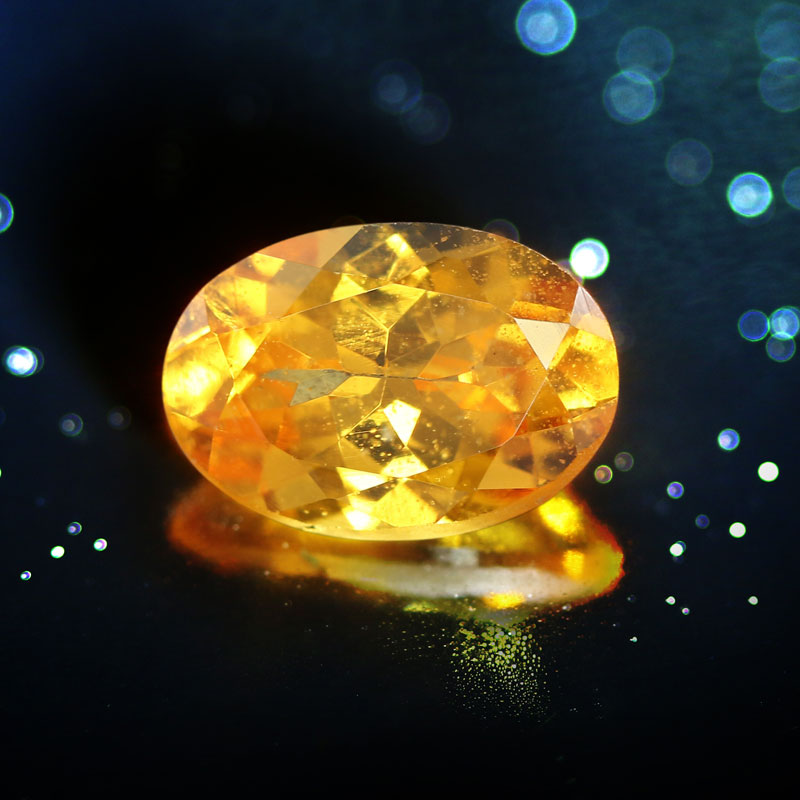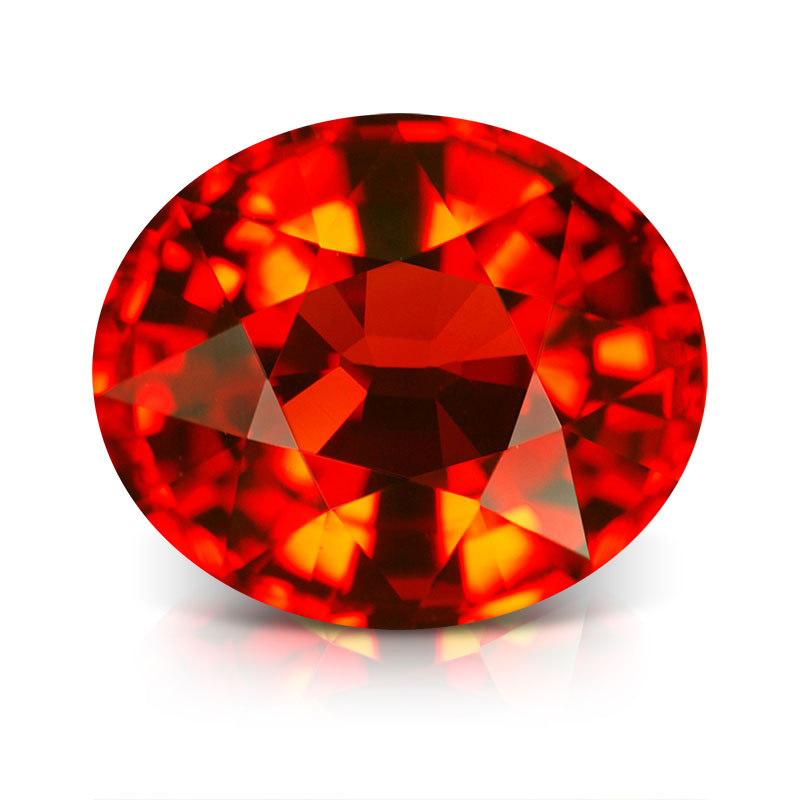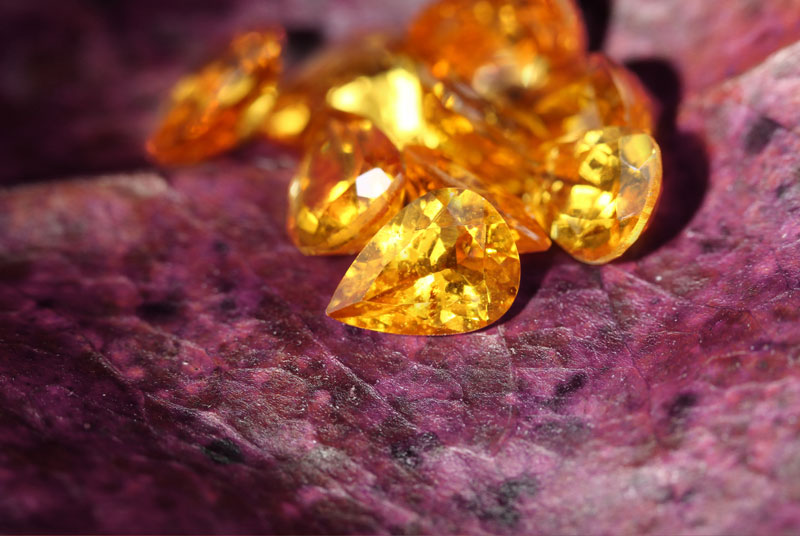
Name
Spessartite is named after its original source in Spessart in the German state of Bavaria after its discovery in the mid-19th century. It is a member of the Garnet family.
History of Spessartite
Garnets are present in many myths as a symbol of light, faith and truth. It is said Crusaders set Garnets into their armour because they symbolised Christ's sacrifice. Also present in Islam, Garnets illuminate the fourth heaven, while for Norsemen, they guide the way to Valhalla.
Composition of Spessartite
Spessartite is a part of the Garnet family, a group of minerals possessing similar crystal structures, varying in composition. It is a ‘self coloured’ gemstone and the manganese present in every Spessartite means that the gem with always be a shade of orange.
Depending on how much iron of Almandine Garnet is present, deeper reds and reddish-browns are also possible.
Properties of Spessartite
The colours typically seen in Spessartite are orange, deep reddish-orange, rich golden orange with red flashes, yellowish-orange and deep red. The more intense vibrant reddish-oranges and 'classic' rich oranges are typically the most valuable.
The high refraction of Spessartite, it has the fifth highest refractive index after Diamond, Sphene, Zircon and Demantoid, means that a good brilliance is standard.
Although Spessartite is regarded as a Type II gemstone occurring with some minor inclusions that may be eye-visible, favour eye-clean gems. Lighter coloured and larger examples, as well as Namibian Mandarin Garnet, may have more inclusions.
Sources of Spessartite
After being discovered in Bavaria, Spessartine was later found in Virginia's Rutherford Mines. The Namibia’s and Nigerian mines are currently the most significant sources but Spessartine is also mined in Australia, Brazil, Kenya, Madagascar, Mozambique, Pakistan, Sri Lanka, Tanzania and Zambia.





